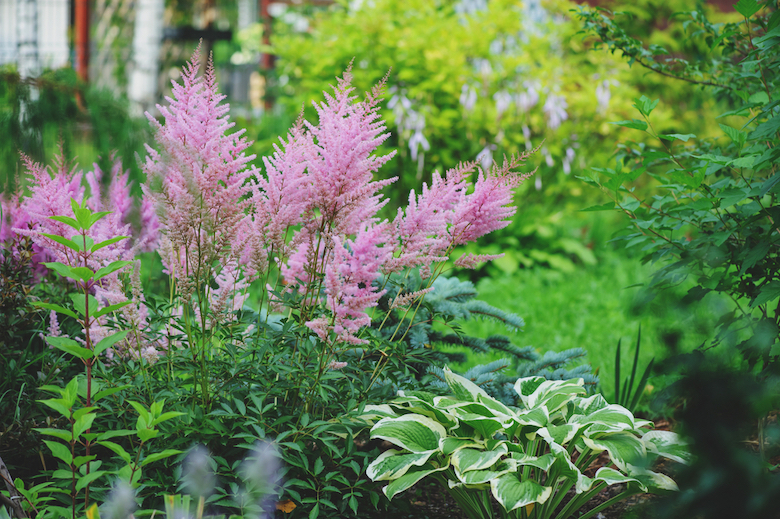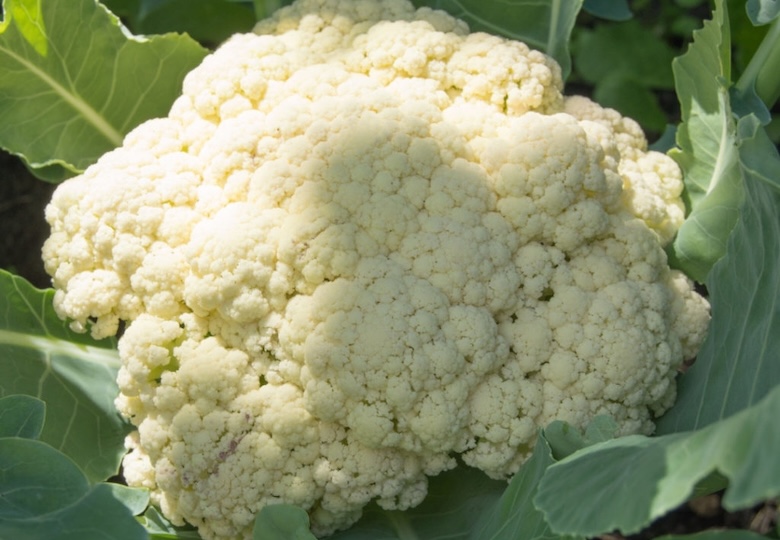Most gardens have at least one dark or shady spot. in the shadow of buildings, fences, or overhanging trees, these areas can seem challenging, especially if the soil is also very dry or damp. However, a shady garden isn’t a problem to be overcome – it’s an opportunity! Shade-loving plants are some of the most beautiful and atmospheric plants available.
With a little preparation and the right plant choices, you can transform a dark corner into a lush, thriving part of your garden.
How to garden in shade

Image Source: Shutterstock
Creating a welcoming and productive space in the shade isn’t complicated. The key is to first understand your specific conditions and then improve them. Before you start, it’s essential to work out what kind of shade you’re dealing with. This is the single biggest factor in choosing the right plants.
1. First, assess your light levels
There are several different levels of shade, and most gardens will have a mixture.
- Light shade: Open to the sky, but with no direct sunlight.
- Semi-shade (or partial shade): Receives three to six hours of direct sun during the middle of the day in summer.
- Dappled shade: Light that is filtered through the leafy canopy of trees.
- Moderate shade: Receives only two to three hours of direct midsummer sun.
- Deep shade: Receives less than two hours of direct sun and is often in constant shade at the base of a wall or under dense evergreens.
2. Next, improve the soil and growing environment
You can dramatically improve a shady spot with a few simple tricks before you even think about planting.
- Brighten the area: If trees are blocking the light, carefully remove the lowest layer of branches to raise the canopy, allowing more light to reach the ground. Paint walls, fences, and sheds in light colours and use pale-coloured stone or gravel to reflect light.
- Dealing with dry shade: This condition is often created by walls casting a ‘rain shadow’ or by large trees whose roots draw moisture from the soil. To fix it, dig in plenty of well-rotted manure or compost before planting to help the soil retain moisture. After planting, add a mulch (like bark chips or compost) to help prevent evaporation.
- Dealing with damp shade: This cool, moist environment often occurs near a water source or on heavy clay soil. Most plants for this area need moist but well-drained soil, so improve the soil structure by digging in lots of organic matter. If your soil remains very wet and poorly drained, consider creating a dedicated bog garden to grow plants that will thrive in those conditions.
Best plants for a shady garden

Image: Shutterstock
Choosing plants adapted to your specific conditions is the key to success. These suggestions are in order of the shade they tolerate, and then their soil preference.
Plants for light, dappled, or partial shade
Dapple shade gives you the widest choice of plants. These spots, which receive a few hours of sun or bright, filtered light each day, can support a surprising number of flowering perennials and shrubs.
Light shade plants for dry soil
In dry, partially shaded conditions, you can grow a range of tough and beautiful plants.
- Shrubs: Daphne laureola, Eleagnus x ebbingei (oleaster), Garrya elliptica (silk-tassel bush).
- Perennials: Alchemilla mollis (lady’s mantle), Brunnera macrophylla (Siberian bugloss), Geranium phaeum, Epimedium (barrenwort).
- Bulbs: Anemone nemorosa (woodflower), bluebell, cyclamen.
- Annuals/Biennials: Digitalis purpurea (foxglove), honesty (Lunaria annua).
Light shade plants for damp soil
With moisture in the soil, you can grow a host of lush, woodland-style plants.
- Shrubs: Camellia, Gardenia, Hydrangea, Skimmia japonica.
- Perennials: Anemone x hybrida, Astilbe, Astrantia, hellebore, Lamprocapnos (bleeding heart), Tricyrtis (Japanese toad lily).
- Climbers: Akebia quinata, Hydrangea petiolaris (climbing hydrangea).
- Bulbs: Cardiocrinum (giant lily), Erythronium (dog’s-tooth violet), winter aconite.
- Annuals/Biennials: Impatiens (busy lizzie), Mimulus, Primula, Viola (pansy).
Plants that tolerate deep or heavy shade
This is a more specialist roundup of tough, reliable plants that can cope with less than two hours of direct sun a day. Think of a space like this as an opportunity to create a tranquil, green space with striking foliage and architectural shapes.
Deep shade plants for dry soil
This is the most challenging garden environment, but these reliable plants are tough enough to cope.
- Shrubs: Mahonia aquifolium, Sarcococca (sweet box), Hypericum calycinum (St John’s Wort).
- Perennials: Bergenia (elephant’s ears), Dryopteris filix-mas (male fern), lamium (deadnettle)
- Climbers: Euonymus fortunei (winter creeper), Parthenocissus tricuspidata (Virginia creeper)
- Bulbs: Snowdrop (Galanthus nivalis)
Deep shade plants for damp soil
These plants are perfect for adding lush, deep green foliage to the darkest corners.
- Shrubs: Buxus sempervirens (common box), Ruscus aculeatus (butcher’s broom), Aucuba japonica.
- Perennials: Hosta (plantain lily), lily of the valley
- Climbers: Hedera helix (common ivy)
Fruit & vegetables for shade

Image: Cauliflower ‘Aalsameer’ from Dobies
It’s amazing what you can grow in a shady veg patch. While deep shade won’t provide you with a huge harvest in deep shade, many leafy greens, root vegetables, and soft fruits are perfectly happy in partial or semi-shade.
- Vegetables: peas, parsnips, carrots, beetroot, radishes, lettuce, spinach, Swiss chard, cabbage, cauliflower, kale, broccoli.
- Fruit: strawberries, gooseberries, rhubarb.
- Herbs: mint, parsley, lovage, chervil.
Success in the shade relies on working with your conditions, not against them. Once you’ve identified your shade type and improved the soil, planting the right choice of plants turns a challenging spot into a garden area full of unique textures, structure, and value for wildlife.
Lead image: Shutterstock

